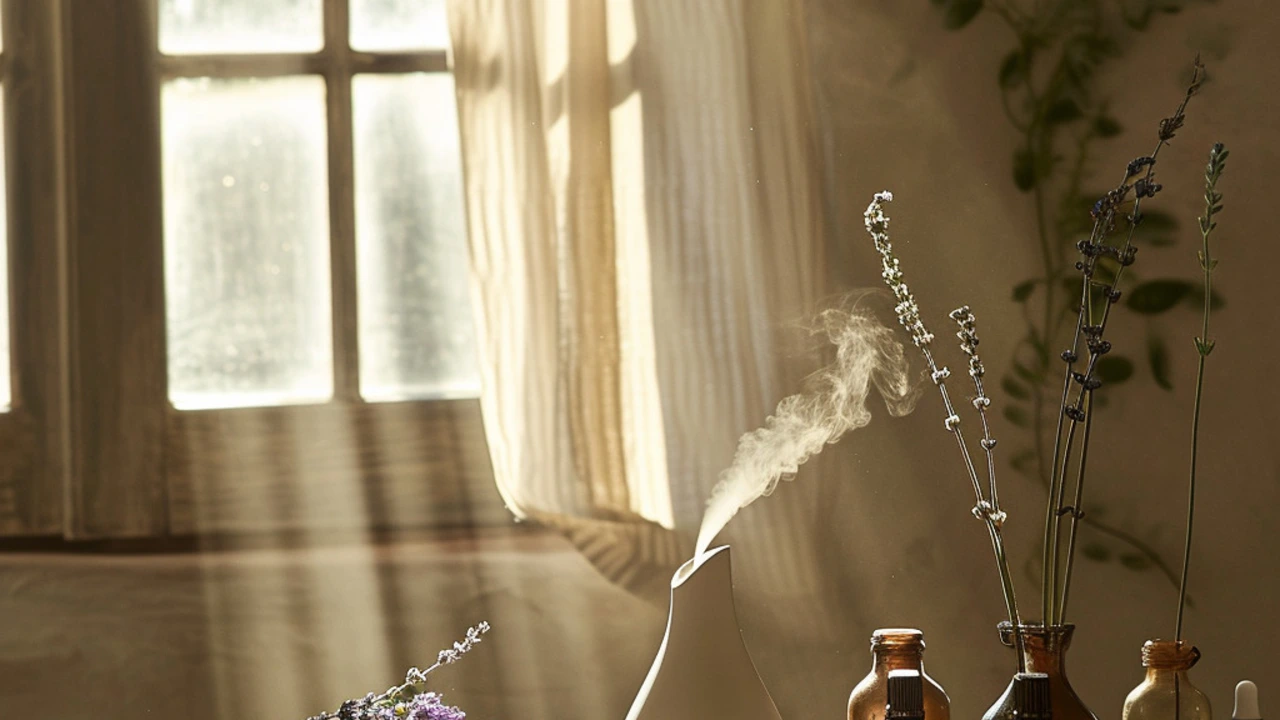
Understanding Aromatherapy and Essential Oils
Aromatherapy, the art of using aromatic substances, notably essential oils, for holistic healing, has been an integral part of human culture since antiquity. Derived from plants, these oils encapsulate the essence of flowers, leaves, roots, and bark, each with its unique properties and benefits. At the heart of aromatherapy is the belief that these oils can influence our body and mind, creating balance and well-being. As a beginner, being familiar with essential oils involves recognizing the diversity of these natural elixirs and their potential uses. Whether you're looking to relieve stress, enhance focus, or simply enjoy natural fragrances, understanding the basics sets a solid foundation for your aromatic adventure.
Selecting the right essential oils is quintessential for a genuine aromatherapy experience. Therapeutic grade oils are high in quality and free from additives, ensuring purity and potency. Although essential oils are natural, they are also highly concentrated and should be approached with respect. An essential part of the learning journey is knowing the botanical names of oils which can help in selecting the correct variety, as some plants yield multiple types of oils with differing benefits. For instance, lavender (Lavandula angustifolia) is well-known for its calming properties, unlike its relative, spike lavender (Lavandula latifolia), which is more stimulating.
Methodologies of Aromatherapy: Application and Techniques
Aromatherapy can be experienced through various methods, each serving a unique purpose and benefiting the user in different ways. Inhalation is one common approach, leveraging the sense of smell to immediately affect mood and emotion. The use of diffusers, which disperse microscopic particles of essential oils into the air, is an easy and effective method for creating a therapeutic environment in your home. Remember, little goes a long way, and a standard rule of thumb is to diffuse for about 30-60 minutes at a time, which is usually sufficient.
Topical application offers a more personal form of aromatherapy. Diluting essential oils with a carrier oil such as jojoba or sweet almond oil before applying to the skin is crucial, as it minimizes the risk of irritation. When applying, focus on pulse points, such as wrists, temples, and behind the ears, to enhance absorption. Aromatherapy massages not only provide the benefits of essential oils but also the relaxing effects of touch. Bathing with essential oils can also be a luxurious way to unwind, but it's important to blend oils with a dispersant like milk or an unscented bath gel to avoid oil floating atop the water and potentially causing skin sensitivity.
Essential Safety Tips for Aromatherapy Newbies
With the potent nature of essential oils, safety is paramount. Always conduct a patch test before using a new essential oil to ensure there is no allergic reaction. Sensitive groups, including pregnant women, children, and those with specific health conditions, should use essential oils with caution and seek advice from a healthcare professional beforehand. It's critical to study and adhere to recommended dilution rates for topical applications, and to be aware that some essential oils, such as citrus oils, can cause photosensitivity, making skin more prone to sunburn.
Storage is another aspect that is often overlooked by beginners. Essential oils should be kept in a cool, dark place in tightly sealed containers, typically dark-colored glass, to maintain their integrity. Plastic containers are not suitable as they can be degraded by the oils. Educating oneself on potential interactions between essential oils and medications you're taking is also important. Lastly, if an essential oil is ingested by accident or a severe reaction occurs, seek medical help immediately. Remember, responsible use of aromatherapy can lead to a wonderful and harmonious experience.
Crafting Your Own Aromatherapy Blends
Creating custom blends is a delightful aspect of aromatherapy, allowing for personal expression and targeting specific needs. When blending, consider the notes of essential oils: top notes are the first impression and evaporate quickly, while base notes last the longest and bring depth to the blend. Middle notes bridge the scent profiles together. A common blending technique is to start with a base note and build the blend with complementary middle and top notes.
It is exhilarating to experiment with different combinations, but it's wise to start with a few oils and observe how they interact before adding more. Diligent note-taking on the ratios and effects of your blends ensures you can recreate or tweak them in the future. Give your blends time to synergize; usually a few days to a week allows the scents to meld together. Through experimentation, you'll find blends that resonate with your mood and offer the therapeutic effects you desire, whether that be calming, uplifting, or balancing.
The Emotional and Mental Benefits of Aromatherapy
The intersection of aromatherapy and emotional wellness is profound. Certain scents have the power to trigger memories and emotions, transporting us to different times and places. Uplifting oils like sweet orange and peppermint can awaken the senses and boost motivation, while the soothing scent of roman chamomile or ylang-ylang may help alleviate stress and anxiety. Incorporating aromatherapy into a self-care routine creates a sanctuary that appeals to the senses and nurtures the soul.
Moreover, aromatherapy can complement mindful practices such as meditation and yoga, enhancing the spiritual and contemplative experience. It encourages us to breathe deeply, which in itself is a powerful act of calmness and centering. Sherlock, my beagle, sometimes curls up beside me during these serene moments, and it's become a cherished ritual for us both. As we explore the nuances of natural scents and their effects, we create an atmospheric alchemy that has the potential to transform our interior landscapes and support our journey towards holistic well-being.





